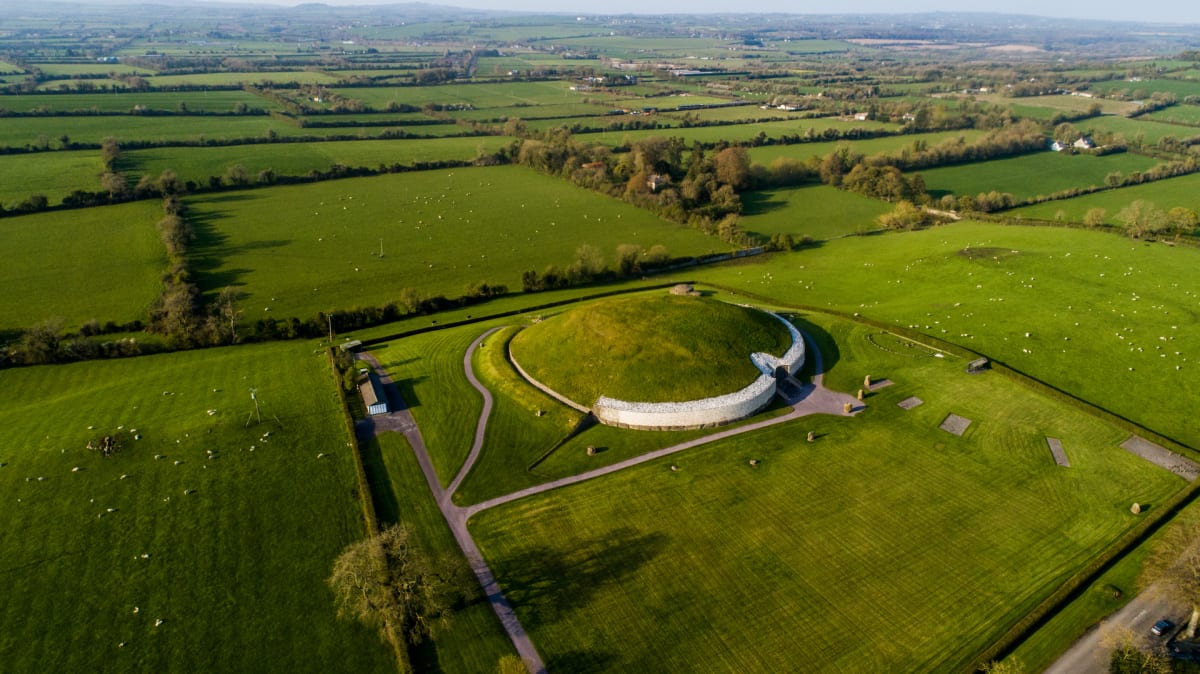
When you think of some of the holiest places in the world, you might think of Mecca, Rome, Jerusalem or Angkor Wat.
Millions of people make pilgrimages around the world every year, many are devotees, others make the journey out of historic or cultural interest. Religious tourism is nothing new, and it's a big industry.
One market research firm estimates the global faith-based tourism market to reach a valuation of $15.07 billion in 2023, and $40.92 billion by 2033. About 3-5% of all tourism-related market revenue is made in the faith-based sector.
The UN’s World Tourism Organization estimates that about 300 to 330 million tourists visit the world’s key religious sites every year, with approximately 600 million national and international religious voyages in the world.
One of the largest pilgrimages in the world, believed to have attracted as many as 100 million people in the past, is India’s Kumbh Mela, where Hindus gather at the Ganges and river Godavari to bathe away their sins.
>> Plus: 10 Top Cultural Travel Destinations
For many, a pilgrimage is a simply a search. In the hopes of inspiring people, Emilio Estevez recently re-released his 2011 film, “The Way,” starring his dad Martin Sheen, about a father’s walk on the Santiago de Compostela Camino in Spain. Estevez told Salon in an interview that the film is about finding yourself, but it is really about not being able to find yourself if you don't have community.
Patheos, an online platform for exploring and understanding religion and spirituality, has compiled a list of 100 most holy places on Earth that includes everything from temples and ancient shrines to resplendent gardens and majestic mountains -- all sacred, and all annually attracting curious tourists and the faithful alike who seeking learning, solace, transcendence and connection.
To create their list of 100, which they’ll be publishing in batches of 10 over the summer, Patheos used an algorithm that considered multiple factors and parameters, including the number of faiths attributing sacred or holy status to each site, the frequency of online searches for each location and actual visitors to the physical location. The final ranking was voted on by their editorial staff and a mixture of religious leaders and scholars who contribute to Patheos.
This selection of 15 sacred places may not be the ones you hear about most, but it includes sites around the world that are each open to all visitors and tell distinct histories from a variety of faiths.
Here's a sample of some of the 100 most sacred places around the world.
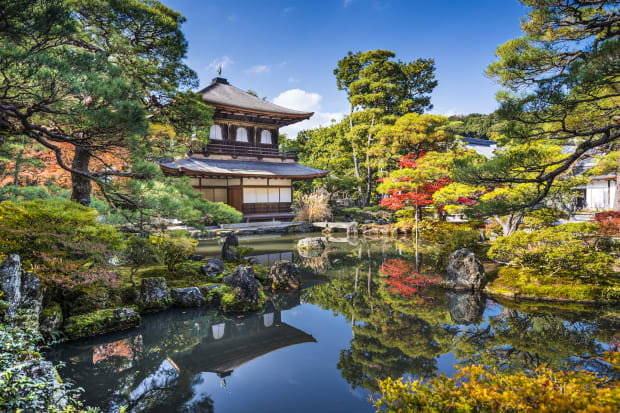
Higashiyama Jisho-ji
Kyoto, Japan
Also known as Ginkaku-ji Temple, Jisho-ji stands at the base of the eastern mountains of Kyoto, Japan. This Zen Buddhist temple dates back to the shoguns of the 1300s. It was originally built as a villa for the eighth shogun Ashikaga Yoshimasa.
Shutterstock
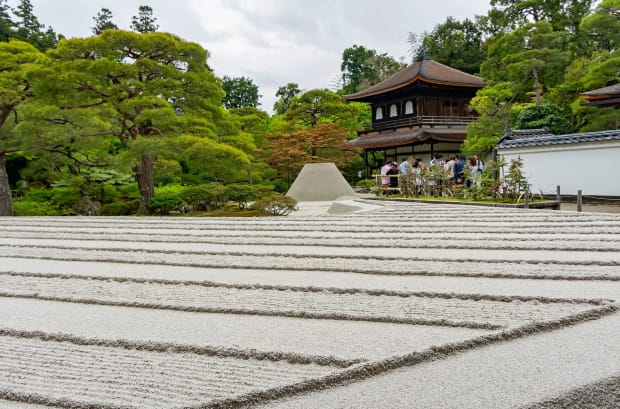
Jisho-ji is known for its beautiful scenery during all seasons, peaceful atmosphere, and its neatly-manicured garden with white sand.
Shutterstock
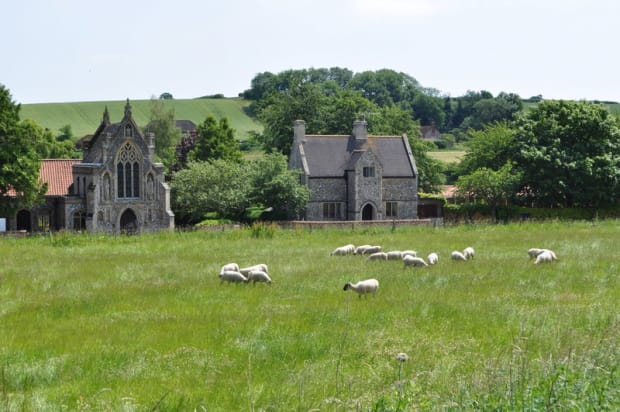
Basilica of Our Lady of Walsingham
Norfolk, England
Also known as the Slipper Chapel, this Catholic basilica in Norfolk was built in 1340. It was the last chapel on the pilgrim route to Walsingham, which at the time was second only to Canterbury for English pilgrimage. Today, many pilgrims remove their shoes to walk the last mile to Walsingham barefoot, hence the nickname, "Slipper Chapel."
Ashley Dace / Wikipedia
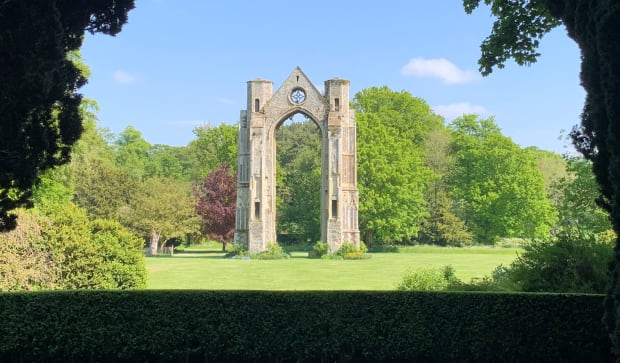
When the Church of England broke away from the Catholic church during Henry VIII’s reign, the Walsingham chapel fell into disrepair, and was variously used as a poor house, a forge, a cowshed and a barn. It was restored by a wealthy local woman in the 1800s.
Shutterstock
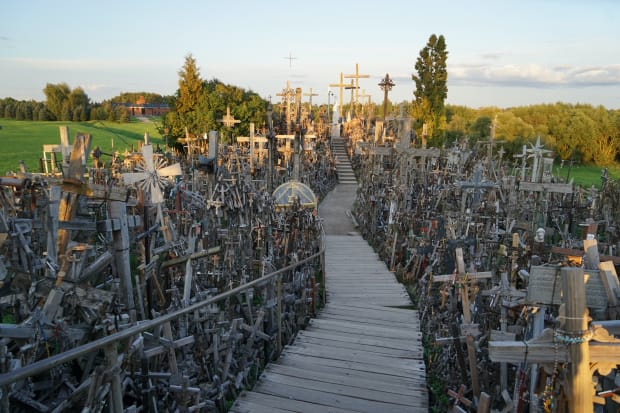
Hill of Crosses
Siauliai, Lithuania
Hundreds of thousands of crosses left over the years mark a tradition dating back to the 14th century on a hill just north of this small industrial city in Lithuania. The crosses represent Christian devotion and serve as a memorial to Lithuanian national identity.
Shutterstock
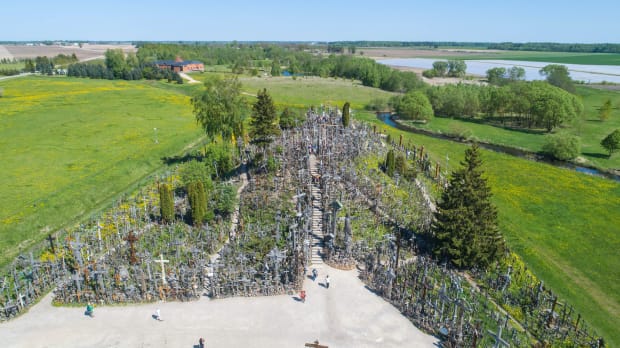
The tradition of placing crosses here probably first arose as a symbol of Lithuanian defiance of foreign invaders, according to the World Pilgrimage Guide. Since the medieval period, the Hill of Crosses has represented the peaceful resistance of Lithuanian Catholicism to oppression. On windy days breezes blowing through the forest of crosses and hanging rosaries produces a uniquely beautiful music.
Shutterstock
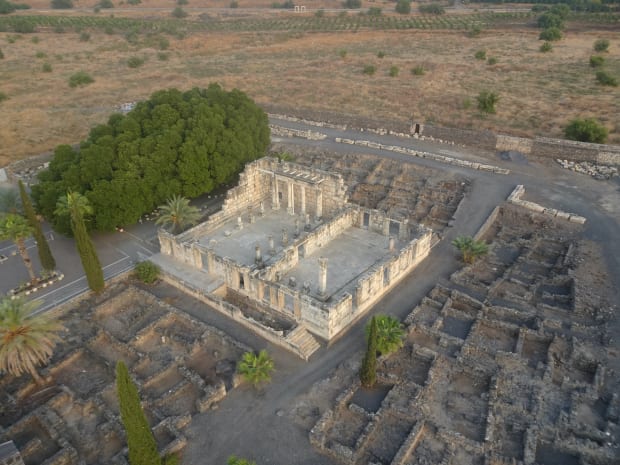
Capernaum Synagogue
Israel
The Capernaum Synagogue, also known as the White Synagogue, is a Jewish temple in the ancient fishing village of Capernaum, in today’s Israel. It dates back to about 450 AD, but beneath the partly excavated structure is one that dates back to the first century, and is believed to be the actual synagogue of Capernaum -- possibly where Jesus may have preached and the center of his activities.
Shutterstock
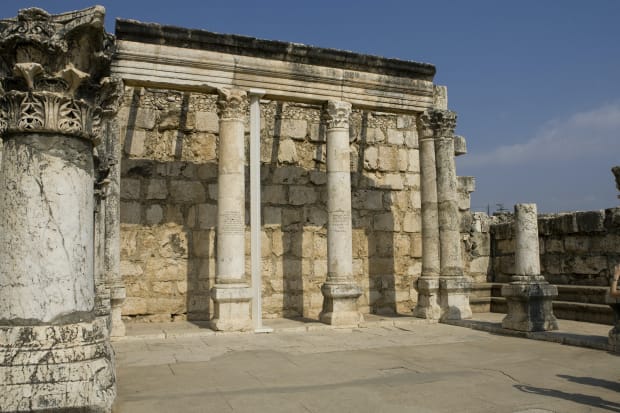
The ancient synagogue has two inscriptions, one in Greek and the other in Aramaic, that commemorate the benefactors that helped in the construction of the building. There are also carvings of five- and six-pointed stars and of palm trees.
Shutterstock
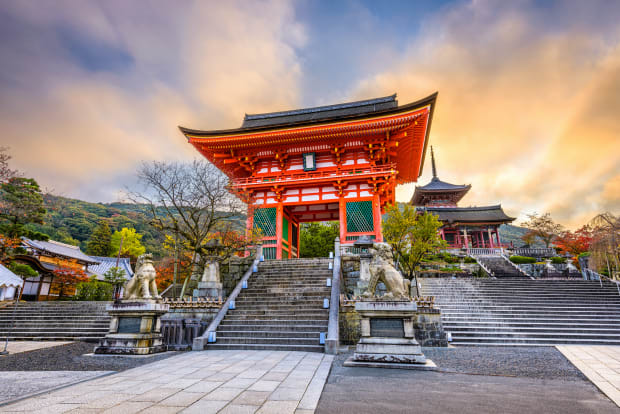
Kiyomizu-dera
Kyoto, Japan
This 1,250-year-old Buddhist temple sits halfway up a mountain near Kyoto and is a Unesco World Heritage site.
The temple's present buildings were constructed in 1633, ordered built by a shogun. There is not a single nail used in the entire structure.
Shutterstock
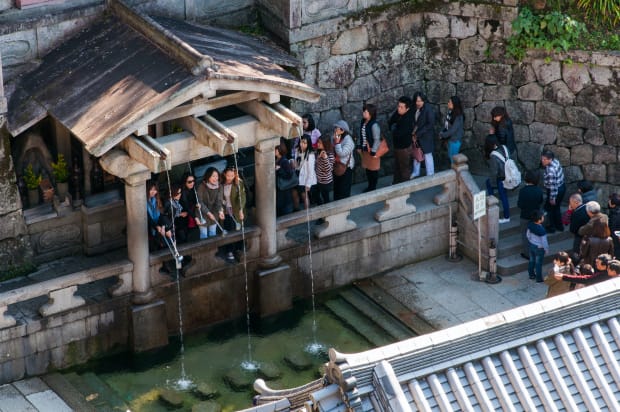
Kiyomizu-dera takes its name from the waterfall within the complex, which runs off the nearby hills. Above, people wait to wash their hands and drink the water that runs through the temple.
Shutterstock
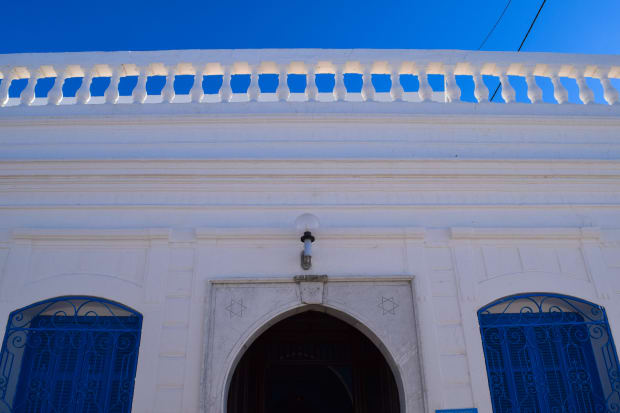
El Ghriba Synagogue
Djerba, Tunisia
Located on the Tunisian island of Djerba, this house of worship is central to an Orthodox Jewish village, home to about 1,300 Jews.
Shutterstock
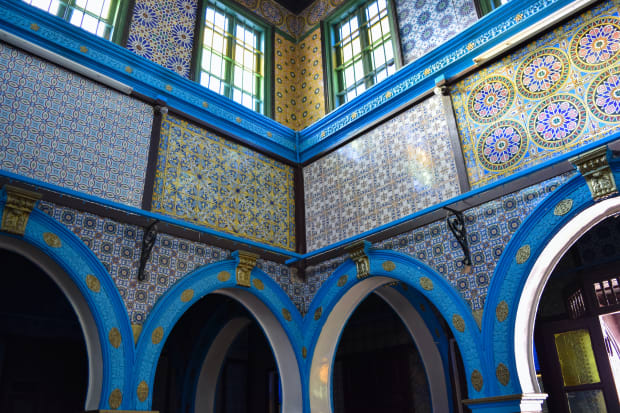
The synagogue is the oldest in Tunisia, and possibly all of Africa, dating back possibly 2,600 years. One of the legends associated with its founding claims that either a stone or a door from Solomon's Temple or the Second Temple is incorporated in the building.
Shutterstock
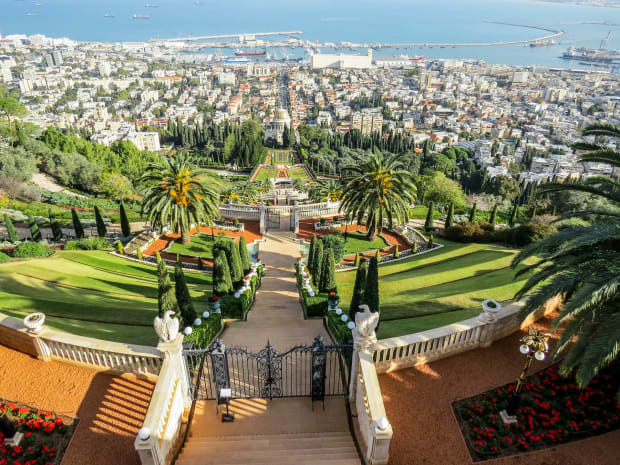
Hanging Gardens of Haifa
Haifa, Israel
Located in Haifa, Israel, on the side of Mount Carmel, this is one of the most popular Baha'i attractions in the country, and popular among tourists overall. The Baha'i faith is a religion founded in the 19th century, originating in Iran, that teaches the essential worth of all religions and the unity of all people.
Shutterstock
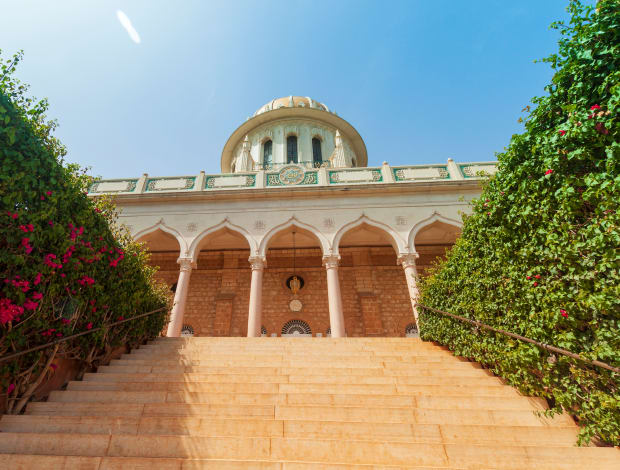
Completed in 2001, the hanging gardens have 19 terraces and more than 1,500 steps ascending the mountain.
Shutterstock
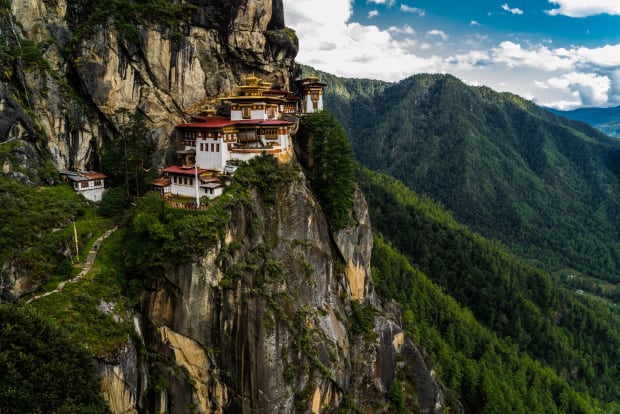
Paro Taktsang
Paro, Bhutan
This sacred Vajrayana Himalayan Buddhist site is perched on a sheer cliffside in the tiny Himalayan kingdom of Bhutan, more than 10,000 feet above sea level. It is one of 13 “Tiger's Nest” caves in historical Tibet in which Padmasambhava, a tantric Buddhist master, practiced and taught Vajrayana Buddhism.
Shutterstock
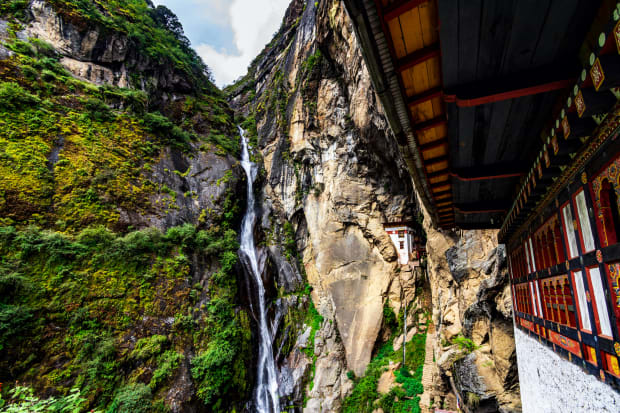
Although visitors can go to the monastery, it is so isolated it is only accessible by mountainous paths.
Shutterstock
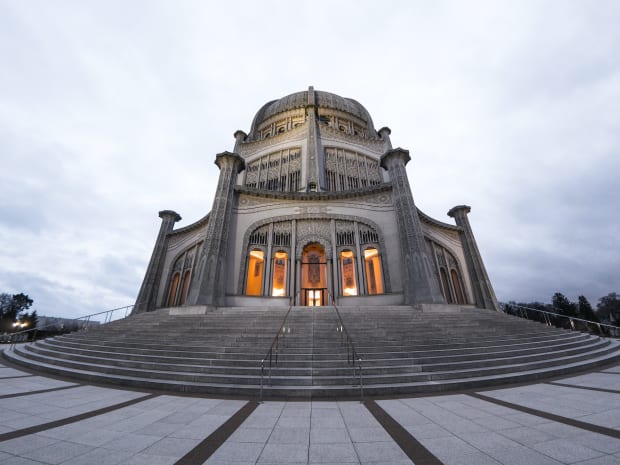
Baha’i House of Worship
Wilmette, Illinois
This Baha’i house of worship near Chicago was built between 1912 and 1953. The domed structure is surrounded by gardens and fountain on seven acres.
Shutterstock
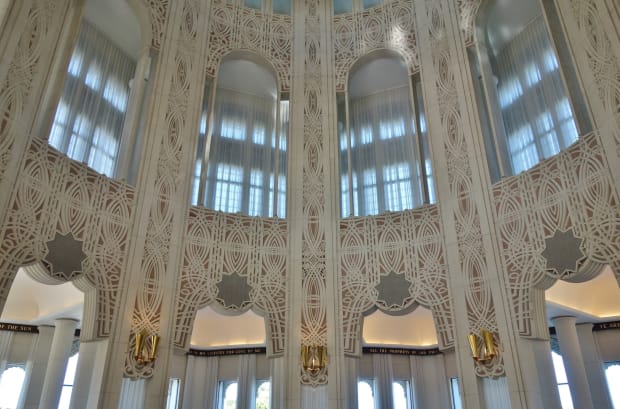
Many elements of the Baha’i House of Worship occur in groups of nine, which is believed to symbolize perfection and completion. There are nine entrances to the auditorium, nine interior alcoves, nine dome sections, and nine fountains in the garden. The place has become a popular destination for tourists, and the Illinois Office of Tourism has named it one of the "Seven Wonders of Illinois.”
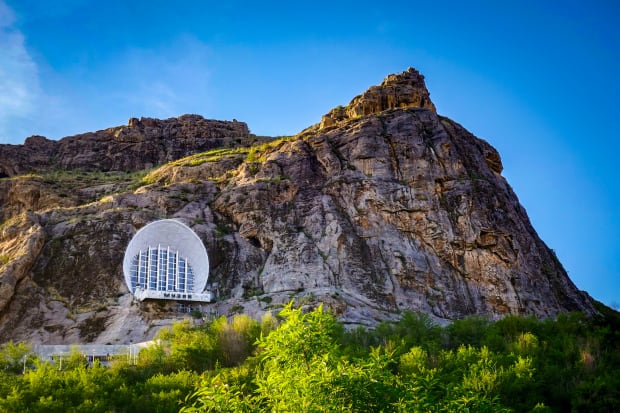
Sulayman Mountain
Osh, Kyrgyzstan
The peaks and slopes of this mountain contain various Islamic sites, including mosques, sacred caves and stone shrines that were once places of worship. It is a Unesco World Heritage site. Veneration for the mountain blends pre-Islamic and Islamic beliefs. The rock rises abruptly from the surrounding plains of the Fergana Valley and is a popular place among locals and visitors, with splendid views. Shown here is the entrance to the museum.
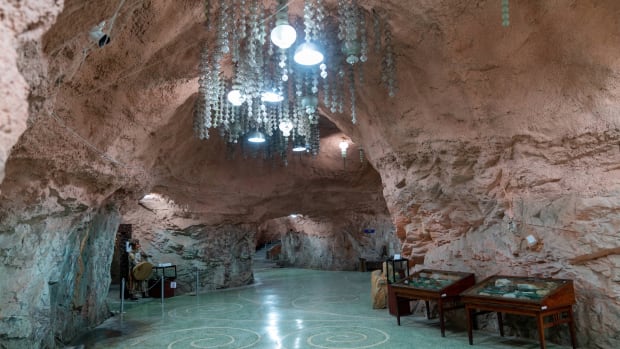
The Sulayman National Historical and Archaeological Museum Complex was built into the rock during the Soviet era, and features archaeological findings from the area and its history.
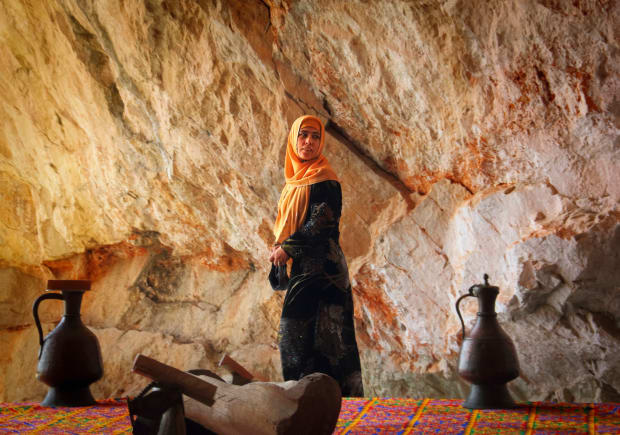
Sulayman is still a popular place for local Muslims, with stairs leading up to the highest peak where there is a small mosque originally built in 1510. Much of the mosque was reconstructed in the late 20th century.
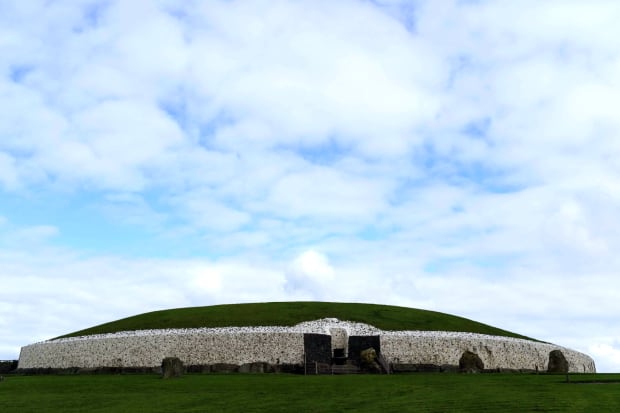
Newgrange
Newgrange, Ireland
This ancient Neolithic burial mound and astrological temple attracts visitors from many faiths and non-religious tourists alike. The 5,200-year-old tomb is located in the Boyne Valley in Ireland's Ancient East, an area with many monuments even older than Stonehenge or the pyramids of Giza.

The kidney-shaped mound at Newgrange covers more than an acre. The stones at its base are decorated with megalithic art. Inside, a 60-foot passage leads to a cross-shaped chamber with a corbelled roof.
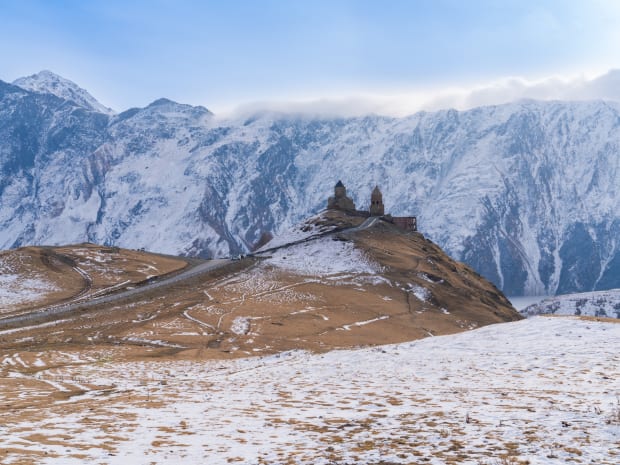
Gergeti Trinity Church
Kazbegi, Georgia
This monastery in Kazbegi, Georgia, is the country’s most popular tourist destination. Sitting at 7,100 foot elevation, the Gergeti monastery dates back to the 14th century.
Shutterstock
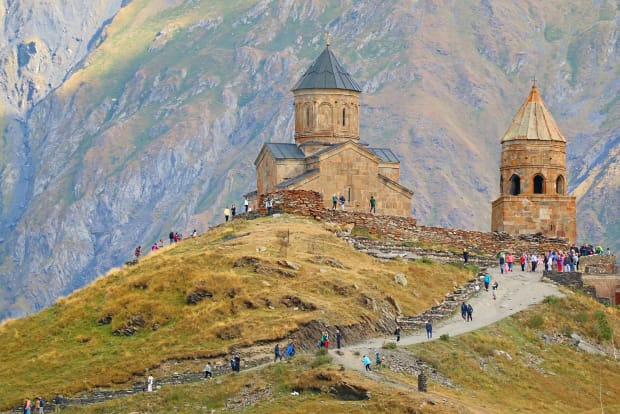
In 2018 a road was built to the Gergeti monastery. The church is used primarily by members of the Georgian Orthodox and Apostolic Church. During the Soviet area, religious services were prohibited.
Shutterstock
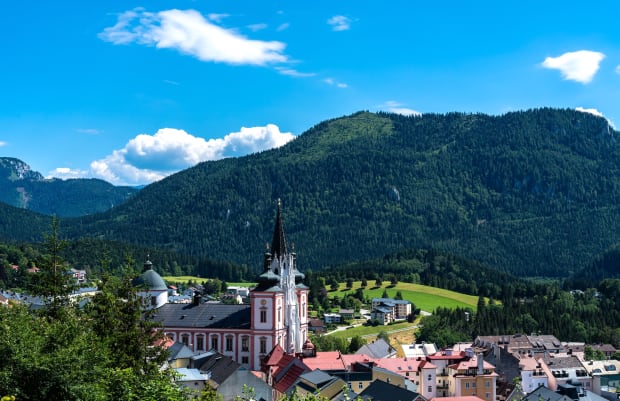
Mariazell Basilica
Mariazell, Austria
One of the most visited Roman Catholic shrines in Europe, this basilica in Mariazell, Austria, is an important pilgrimage destination, and dates back to the year 1157. According to legend, a monk traveled to the town that year with a wooden statue of the Virgin Mary. A boulder that blocked his path was miraculously split, and the statue is still honored today for its powers.
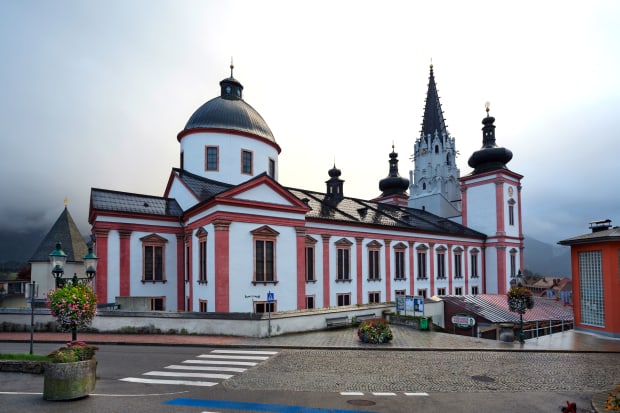
In the mid-17th century, the Mariazell church could no longer accommodate the great number of pilgrims, so the Gothic church was expanded and converted to its current Baroque style.
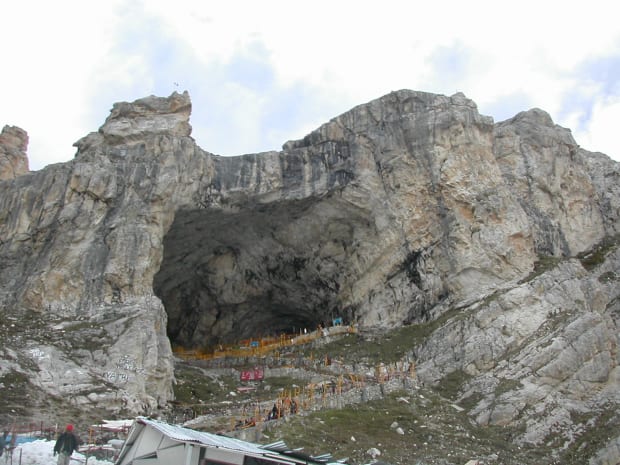
Shri Amarnath Cave Temple
Jammu and Kashmir, India
This Hindu shrine in far north India’s Kashmir region is in a cave at 12,756 feet above sea level. Pilgrims visit the holy site during the 45-day season around the festival of Shravani Mela in July and August, when a huge ice stalagmite, believed to be the manifestation of the Hindu god Shiva, is at its peak inside the cave.
Wikipedia
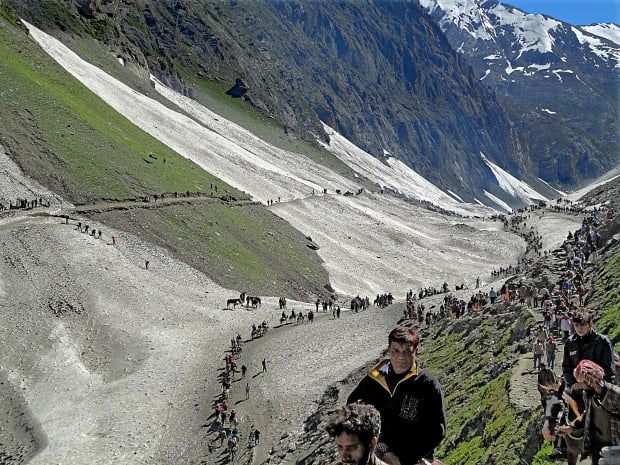
To visit Shri Amarnath, pilgrims have to pre-register months in advance and are allotted quotas by the state. Devotees travel on two main routes to the cave, mostly on foot.
Nittin sain / Wikipedia
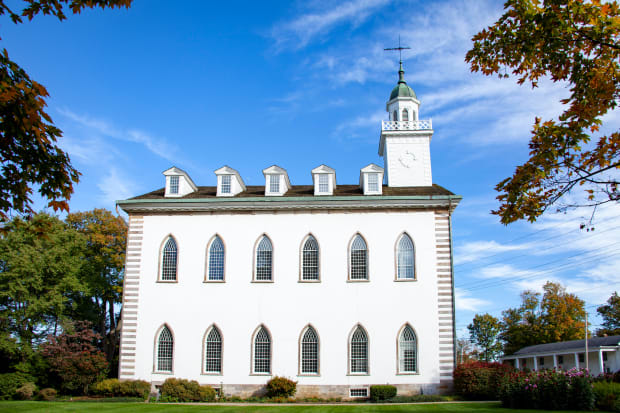
Kirtland Temple
Kirtland, Ohio
The Kirtland Temple in northeastern Ohio was the first temple built by adherents of the Latter Day Saints movement and was designed by Joseph Smith, the founder and original leader of the movement. While the Temple is no longer used or even owned by the Latter Day Saints, it remains a place of pilgrimage for members of the various restoration denominations.
Patheos is revealing more of its list of 100 Most Sacred Places over the next few weeks, exploring the most holy places on Earth across diverse religions.
>> Read next: 12 Dark Parks Where You Can See Millions of Stars







